LighTopia, a transformative project where the community plays a pivotal role in shaping their public space through the lens of participatory design. In this immersive journey, we invite you to explore our comprehensive methodology, emphasizing collaboration, empathy, and the dynamic synergy between community insights and innovative design.
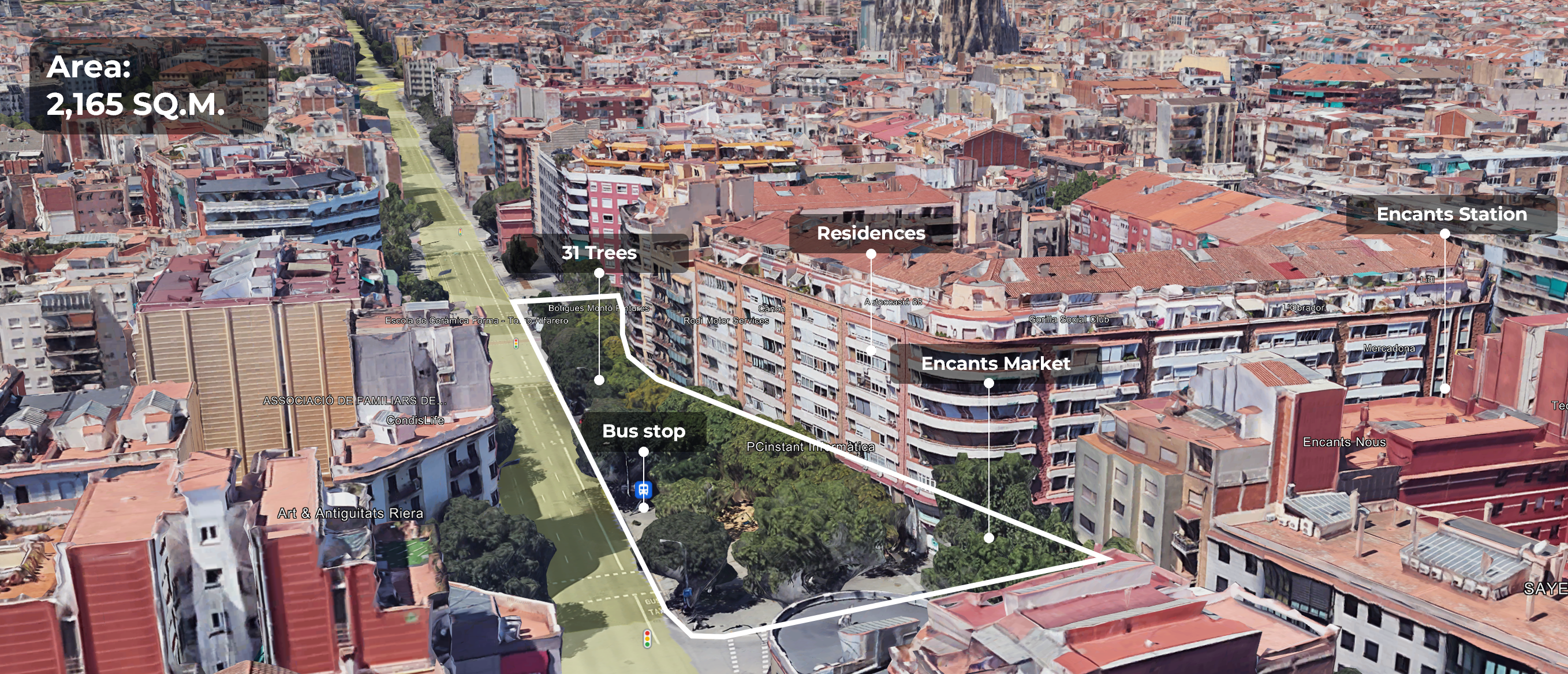
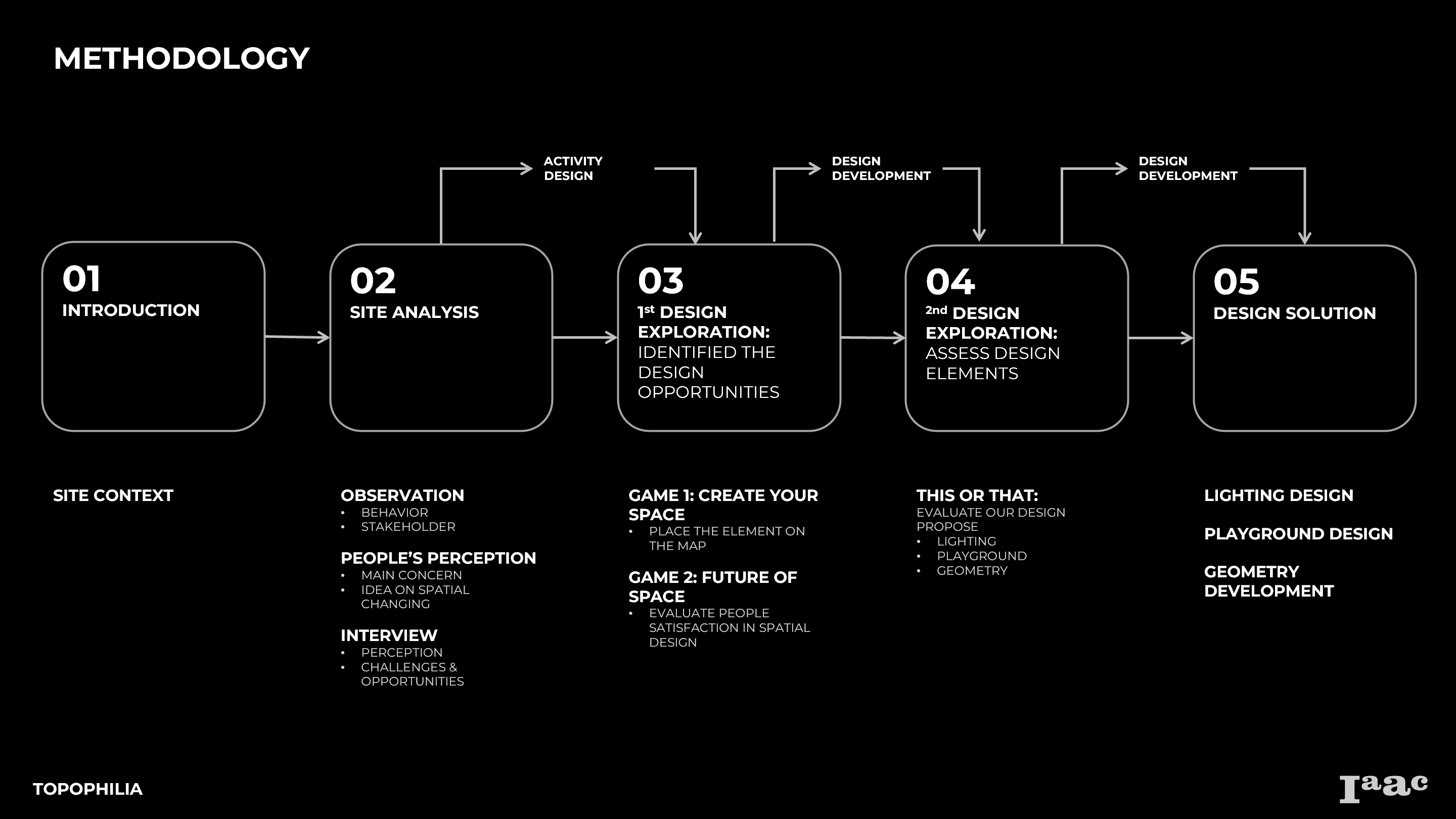
1. Site Context and Data Analysis:
Our journey begins with a deep dive into the site’s context and a meticulous analysis of related data. This foundational step allows us to comprehend the unique characteristics and challenges of the space, laying the groundwork for a participatory design approach that resonates with the community’s identity.
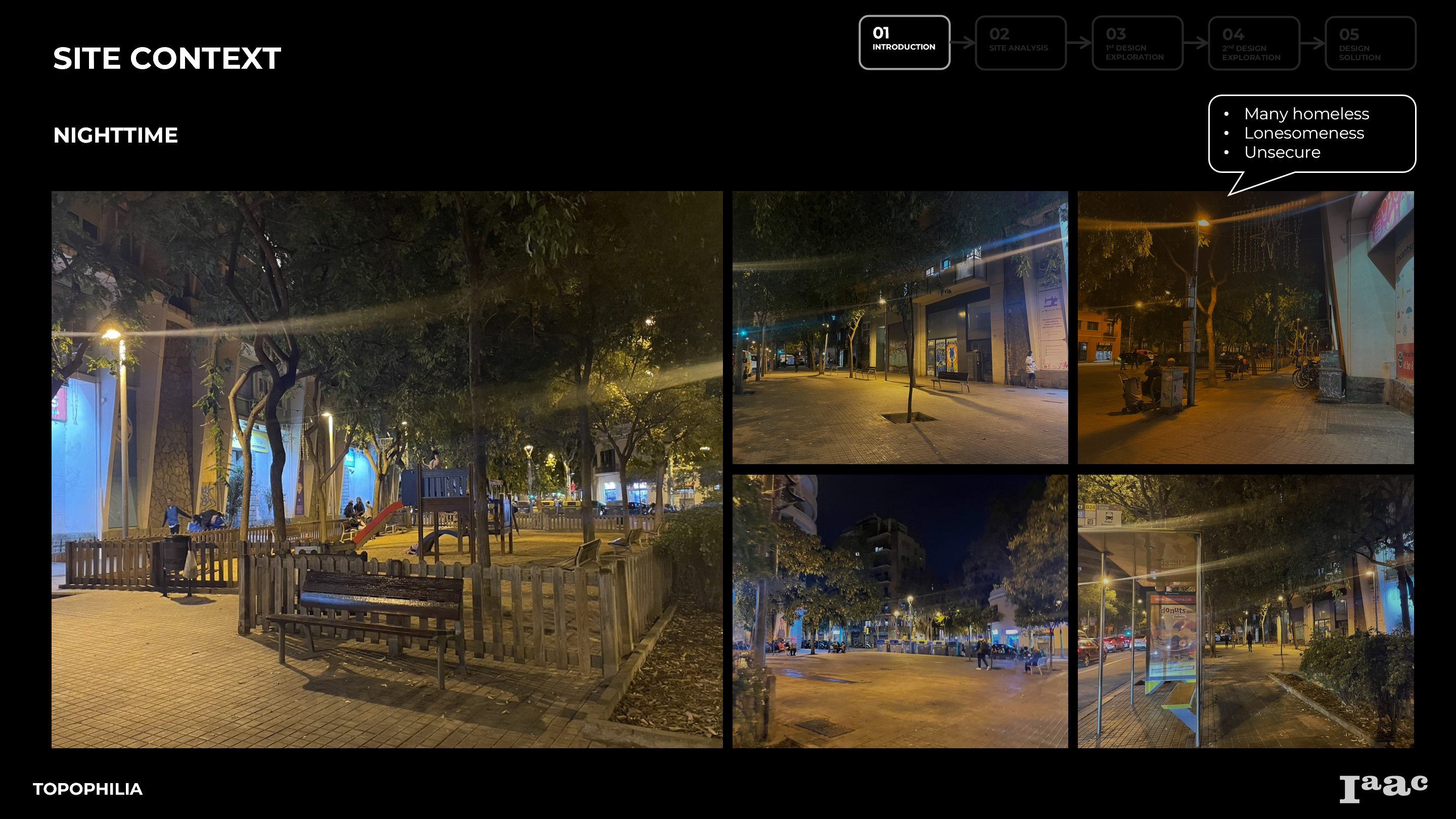
2. Comprehensive Site Analysis:
To gain a holistic understanding of the community’s needs, we break down the site analysis into three pivotal parts. Site observations unveil intricate details about behaviors and movements, offering valuable insights into the utilization of the space.
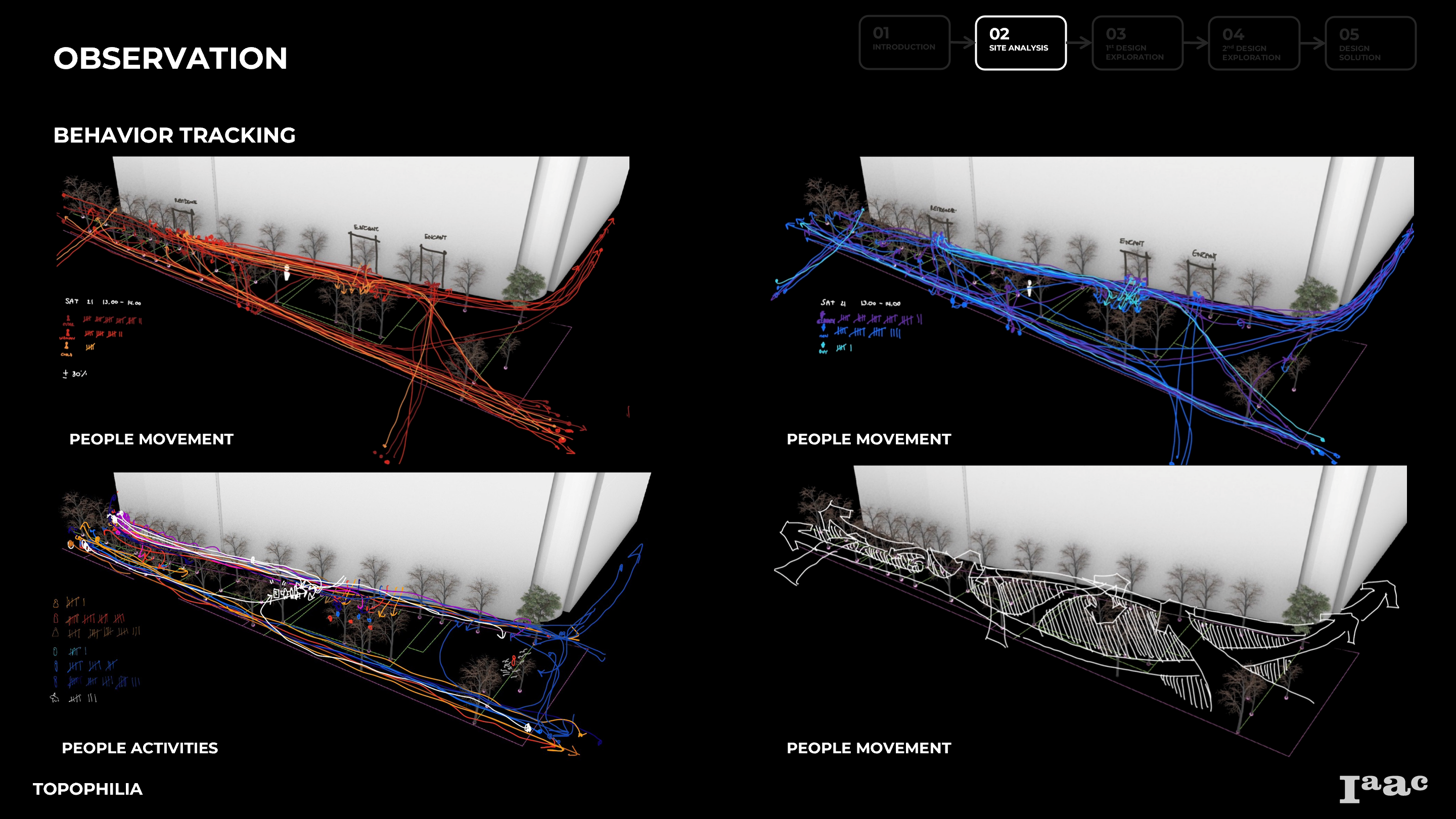
Concurrently, engaging with the community through perceptions and online questionnaires ensures a rich tapestry of perspectives, fostering a symbiotic relationship between data and human experience.

3. 1st Design Exploration – Participatory Games:
Armed with a wealth of information, our journey proceeds to the first design exploration, orchestrated through participatory games.

“Create Your Space” empowers community members to envision and articulate their aspirations for the public space. Simultaneously, “Future of Space” allows individuals to critically evaluate existing conditions and propose transformative improvements, providing a democratic platform for shaping the future of their shared environment.

The participatory process unveils a chorus of concerns from the community, with a resounding emphasis on nighttime security and the desire for a safe playground.
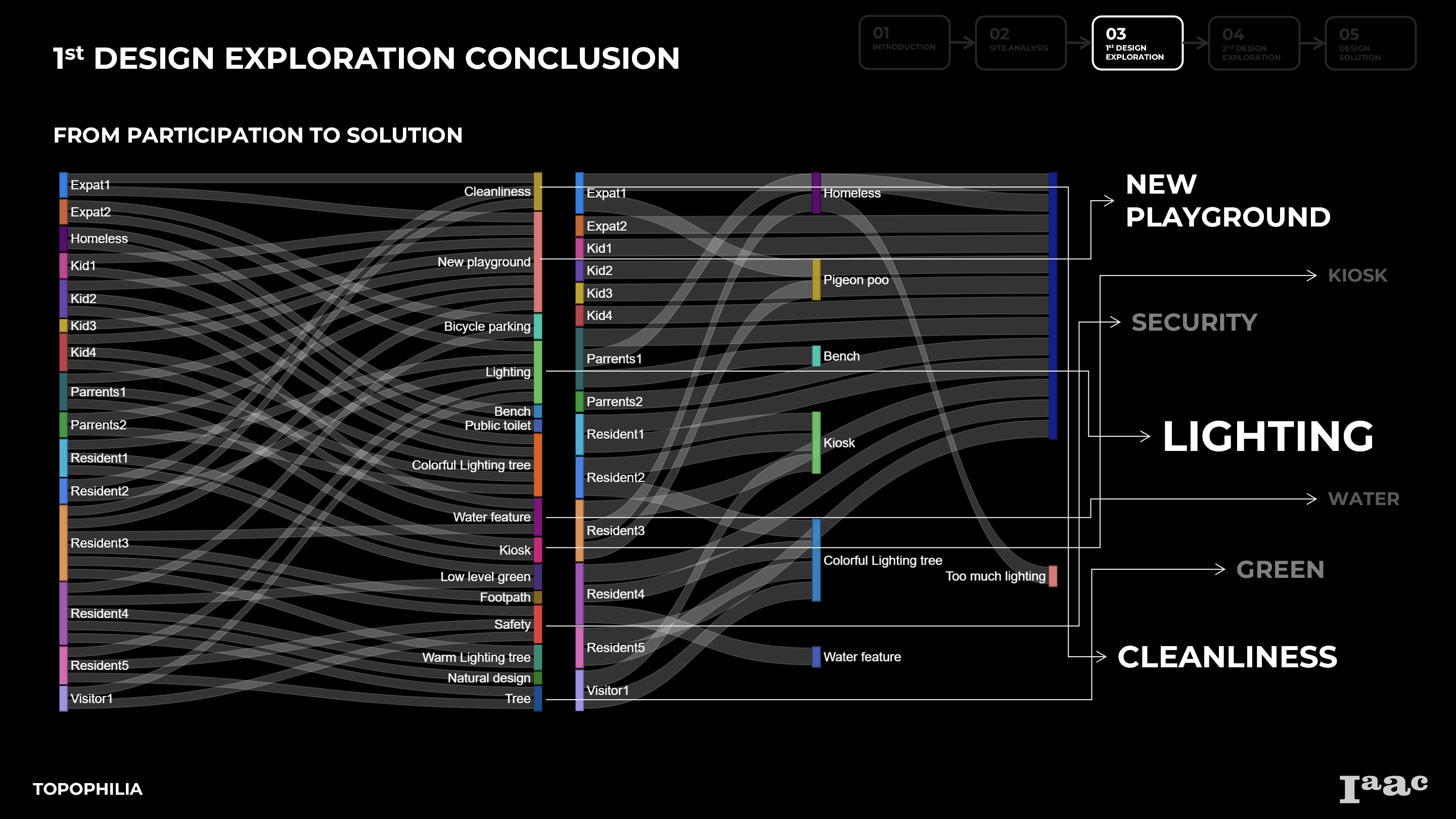
4. 2nd Design Exploration – Addressing Concerns through Lighting Design:
In response, we introduce a transformative solution: lighting design. Our second design exploration intricately weaves lighting interventions with key elements in the space. By inviting community members to comment and choose their preferred lighting elements, we ensure a solution that resonates with their collective vision.


5. Final Design – Balancing Needs and Desires:
Informed by the symphony of community feedback, our final design emerges as a harmonious composition that balances simplicity, convenience, and inclusivity. Recognizing the need for a straightforward geometry that accommodates everyone, we weave simplicity into the fabric of our design. Addressing concerns about playgrounds, we integrate a new play area for children, eliminating the need for families to seek recreation elsewhere.

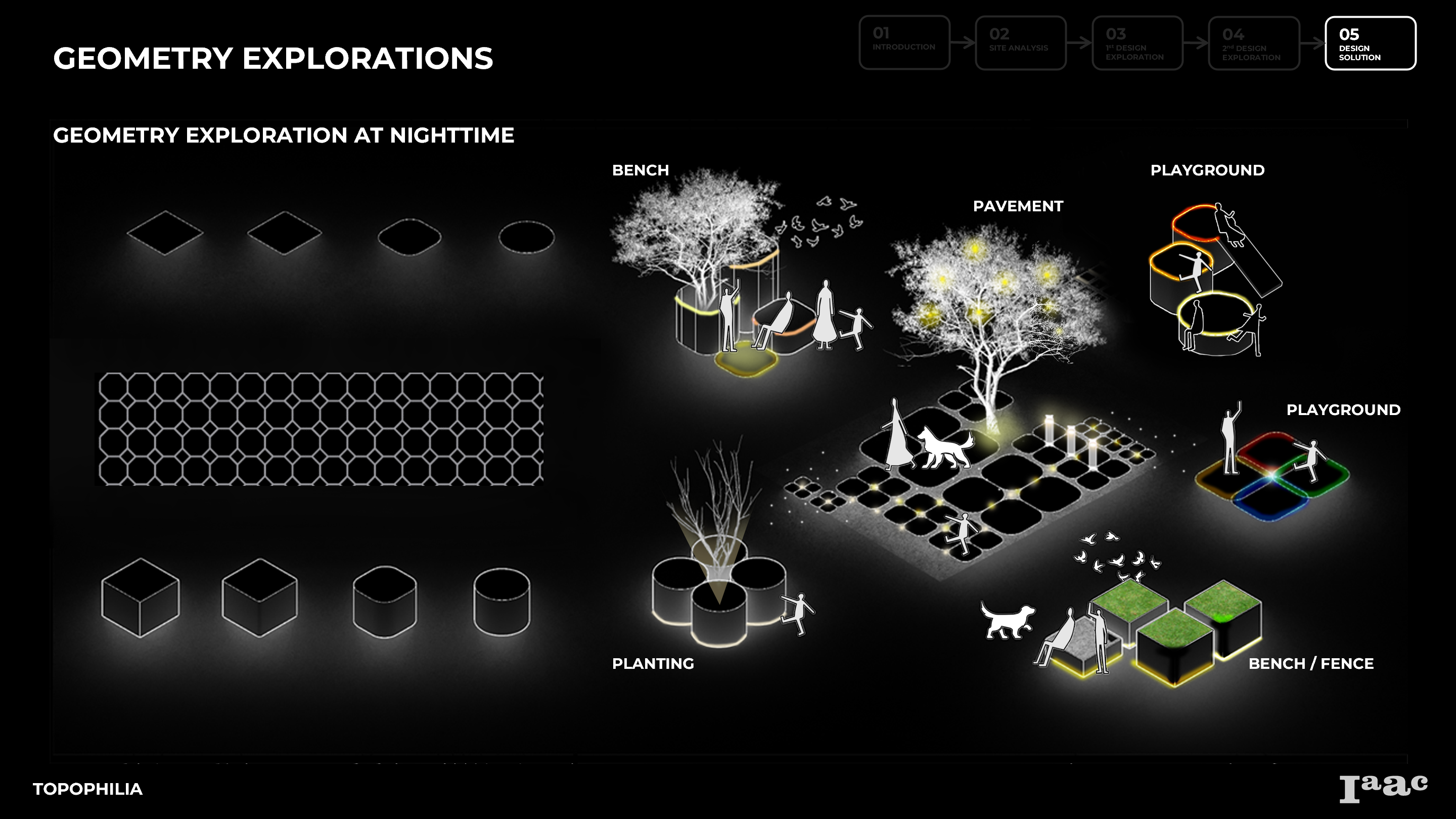
Design solution
Our design explorations across the different phases of public participation had all lead us to one solution; which was to focus on the element of light. It seemed to be the most appropriate and minimally invasive approach to solve the issues we were dealing with at our site at Calle D’Arago.

Geometry design
The geometry we used within our grid was the abstraction of the Barcelona paver stone pattern. We simplified the shape and played with its parameters. It was also the result of our understanding of what sort of patter people liked. It is interesting to point out that within our assessment, we found that the adults and the elderly found the more rigid pattern to their liking, whereas the children found the more fluidic circular pattern more appealing visually.
The geometrical spatial arrangement in the playground takes inspiration from the works of ‘100 Architects’ the group. The idea was mapped onto a grid of 3m x 3m accounting for the menial passage way space that would be required in a public place.
The colors in the playground were kept bright yet the material that was chosen to base these colors on was an impact absorbing EPDM flooring, which would be the material of choice for this sort of an open playground.
Green in the sense of vegetation was inculcated in the hedge that would double as a protection barrier against the road and the noise as well, whilst at the same time making the space greener. In the negative spaces of the grid, we did incorporate more green, around the 2 bigger circles of playground.



Lighting design
The lighting design is meticulously tailored to meet the varied preferences of both adults and children, resulting in a luminous tapestry that blends natural and colorful lighting seamlessly.
Our discussion around the types of lights narrowed us down to 3 specific types of lighting that would serve our needs;
- SPOT LIGHTS – that would be used to highlight the trees. The coloring of the lighting, based upon the participation exercises was decided to be a warm white light, to provide a sense of warmth and security to the space. However to give the space its own identity, multiple color lighting projected on the trees would be used at the entrances of the ENCANTS NOUS MARKET, so as to capture the eyes of the passing public. This would give the the market more visibility.
- LIGHT BOLLARDS – multi – colored lights in the bollards would be used to capture the imagination of kids in an open playground. They would as a boundary for the confines of the play area whilst at the same time allowing the kids to get a little more creative with the manner in which they play.
- LIGHT TREE / HANGING LIGHTS – the concept of this was to further add in a sense of visual appeal and place-making to the space through the utilization of ‘Christmas’ lights.

6. Conclusion:
LighTopia stands as a testament to the transformative potential of participatory design in reshaping urban public spaces. Through collaborative co-creation, we’ve unearthed the unique desires and aspirations of the community, crafting a public space that authentically reflects their identity. This radiant journey illuminates the path toward a more vibrant, inclusive, and community-centric urban environment, where the shared vision of LighTopia continues to light the way forward.

